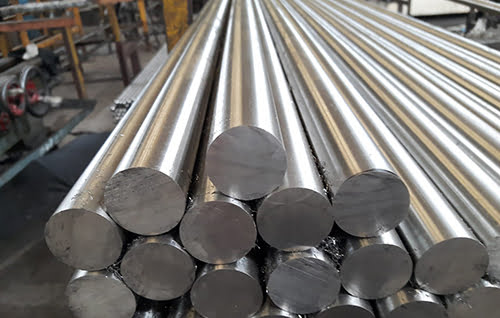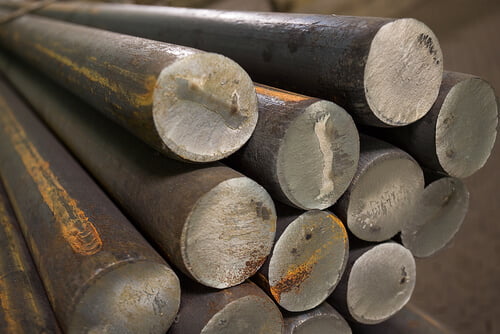Introduction to 4150 steel
Welcome to our blog post on 4150 steel! If you’re in the market for a durable and high-performance steel, then you’ve come to the right place. Whether you’re a seasoned engineer or simply someone interested in understanding more about this versatile material, we’ve got you covered.
In this article, we’ll be diving into the world of 4150 steel – its characteristics, common failures, and most importantly, how to avoid them. So fasten your seatbelts as we embark on this journey together and equip ourselves with valuable knowledge that will help us steer clear of any potential pitfalls when working with 4150 steel. Let’s get started!
Common failures in 4150 steel

Common failures in 4150 steel can occur due to a multitude of factors. One common issue is inadequate heat treatment, which can result in poor hardness and strength properties. This can lead to premature wear and failure under heavy loads or high stress conditions.
Another potential problem is improper weld procedures. When welding 4150 steel, it’s essential to use the correct preheating temperature, post-weld heat treatment, and filler material. Failure to follow these guidelines can weaken the weld zone and compromise the overall integrity of the steel.
Regular maintenance and inspection are crucial for preventing failures in 4150 steel. Over time, corrosion or stress cracks may develop, especially in harsh environments or when subjected to repetitive loading cycles. By conducting routine inspections and addressing any issues promptly, you can prevent catastrophic failures from occurring.
Choosing the right grade of steel for your specific needs is also vital in avoiding failure. Different applications require different levels of strength, toughness, and wear resistance. It’s important to consult with experts who understand the properties of various grades of 4150 steel and can recommend the most suitable option for your particular requirements.
Proper storage and handling techniques are often overlooked but play a significant role in preventing failures. Exposure to moisture or corrosive substances during storage can lead to rust formation or chemical degradation over time. Additionally, mishandling such as dropping heavy objects on the steel surface can cause micro-cracks that could eventually propagate into larger fractures.
By understanding these common sources of failure in 4150 steel and implementing appropriate measures like proper heat treatment procedures, following correct welding practices,regular maintenance checks,choosing optimal grades based on application requirements,and practicing careful storage/handling techniques,you’ll be well-equipped to avoid potential pitfalls associated with this versatile alloy.
Tip 1: Proper heat treatment for optimal performance
Proper heat treatment is crucial for ensuring optimal performance and longevity of 4150 steel. This process involves carefully controlling the heating and cooling of the steel to achieve the desired properties.
To begin, it is important to understand the specific heat treatment requirements for 4150 steel. This alloy requires a precise balance between heating temperature, soaking time, and quenching method in order to achieve the desired hardness and strength.
One common mistake is overheating the steel during the heat treatment process. Excessive temperatures can lead to grain growth and reduced toughness, ultimately compromising its performance. On the other hand, underheating may result in inadequate hardening.
Additionally, proper tempering after quenching is essential for relieving internal stresses and improving toughness. Tempering also helps ensure consistent hardness throughout the material.
It’s worth noting that each application may have different heat treatment specifications based on factors such as load-bearing capacity and environmental conditions. Therefore, consulting with experts or referring to industry standards can help determine an appropriate heat treatment regime for your specific needs.
By following proper heat treatment procedures, you can enhance the performance capabilities of 4150 steel while minimizing failure risks associated with inadequate processing techniques.
Tip 2: Understanding the right weld procedures
When it comes to working with 4150 steel, understanding the correct weld procedures is crucial for avoiding failure. Welding this type of steel requires precision and expertise to ensure a strong and durable bond.
It’s important to choose the appropriate welding method for your specific application. The most common techniques used with 4150 steel include gas tungsten arc welding (GTAW) and shielded metal arc welding (SMAW). Each method has its advantages and limitations, so be sure to consult with an experienced welder or engineer who can guide you in selecting the best approach.
Proper pre-weld preparation is essential. This involves thoroughly cleaning the surfaces that will be welded, removing any contaminants such as oil or rust. Additionally, ensuring a precise fit-up between the parts being joined will help minimize stress concentration points and improve overall weld quality.
During the actual welding process, maintaining consistent heat control is paramount. Excessive heat can lead to distortion or even cracking in the finished welds, while insufficient heat may result in incomplete fusion. Finding that sweet spot where temperature is just right requires skill and experience.
Furthermore, choosing suitable filler metals is critical when welding 4150 steel. Ideally, these should have similar mechanical properties as the base material to ensure compatibility and avoid weak spots in the joint area.
Lastly but importantly, post-weld treatment should not be overlooked. Proper cooling methods such as controlled slow cooling or stress-relieving annealing can help reduce residual stresses that could otherwise contribute to failures down the road.
By understanding these key aspects of weld procedures for 4150 steel, you’ll be well-equipped to tackle any challenges that come your way during fabrication or repair work involving this versatile material. Remember – attention to detail pays off!
Tip 3: Regular maintenance and inspection

Regular maintenance and inspection are crucial for ensuring the longevity and performance of 4150 steel. By implementing a consistent maintenance routine, you can prevent potential failures and avoid costly repairs or replacements down the line.
One important aspect of regular maintenance is keeping the steel clean and free from any contaminants that could compromise its integrity. Regularly inspecting the surface for signs of corrosion or damage is essential. If any issues are detected, they should be addressed promptly to prevent further deterioration.
In addition to visual inspections, it is also recommended to conduct periodic non-destructive testing (NDT) methods such as ultrasonic testing or magnetic particle inspection. These techniques can detect internal flaws that may not be visible to the naked eye. By identifying these defects early on, you can take necessary measures to mitigate their impact before they develop into more significant problems.
Furthermore, lubrication plays a vital role in maintaining the performance of 4150 steel components. Applying suitable lubricants at specified intervals will help reduce friction and wear, thereby extending the lifespan of your equipment.
Establishing a comprehensive record-keeping system for all inspections and maintenance activities ensures accountability and allows you to track any trends or patterns in terms of component degradation or failure. This information can then be used to fine-tune your maintenance practices accordingly.
By prioritizing regular maintenance and inspection procedures, you can maximize the reliability and durability of 4150 steel components while minimizing downtime and repair costs associated with unexpected failures.
Tip 4: Choosing the right grade of steel for your specific needs
Choosing the right grade of steel is crucial to avoid failure in 4150 steel. Different applications require different properties, and selecting the appropriate grade can significantly impact performance and durability.
One important factor to consider is the desired strength and hardness of the steel. Higher carbon content generally results in increased hardness, but it may also lead to reduced toughness. So, it’s essential to strike a balance between these two characteristics based on your specific needs.
Another consideration is corrosion resistance. If you’re working in an environment with exposure to moisture or chemicals, opting for a stainless steel grade with added elements like chromium or nickel can help prevent rusting and degradation over time.
Additionally, take into account temperature conditions. Some grades are better suited for high-temperature environments due to their heat resistance properties. For applications that involve extreme heat or stress, choosing a specialized alloy such as nickel-chromium-molybdenum (NiCrMo) can enhance performance.
Think about machinability requirements if applicable. Certain grades of steel are easier to work with during fabrication processes like cutting or drilling without compromising their structural integrity.
By carefully considering these factors and consulting with experts when necessary, you can ensure that you choose the right grade of 4150 steel for your specific needs and minimize the risk of failure down the line.
Tip 5: Proper storage and handling techniques
Proper storage and handling techniques play a crucial role in maintaining the integrity of 4150 steel. Neglecting these aspects can lead to costly failures and compromised performance. Here are some essential tips for ensuring the longevity of your 4150 steel components.
It is important to store 4150 steel in a clean and dry environment. Moisture and dirt can accelerate corrosion, leading to decreased strength and durability. Consider investing in proper storage solutions such as cabinets or racks that protect against environmental factors.
When handling 4150 steel, avoid dropping or mishandling it as this can cause microcracks or other forms of damage. Use appropriate lifting equipment when moving heavy pieces to prevent accidents and potential injury.
Additionally, it is advisable to keep 4150 steel away from sources of extreme heat or cold temperature fluctuations. Rapid changes in temperature can cause thermal stress, which may result in unexpected failures down the line.
Regular inspections should also be conducted on stored components to identify any signs of degradation or damage early on. This allows for timely repairs or replacements before further complications arise.
By following these proper storage and handling techniques, you can ensure that your 4150 steel remains strong, reliable, and resistant to failure throughout its lifespan.
Conclusion
Avoiding failure in 4150 steel requires a combination of proper heat treatment, understanding the right weld procedures, regular maintenance and inspection, choosing the right grade of steel for your specific needs, as well as proper storage and handling techniques. By following these tips, you can ensure optimal performance and longevity for your 4150 steel components.
Remember that 4150 steel is a versatile material with excellent strength and durability properties. However, it is not immune to failures if not handled correctly. Taking the necessary precautions will help you avoid common issues such as cracking or brittleness.
Whether you’re using 4150 steel in manufacturing machinery parts or firearms components, implementing these tips will significantly reduce the risk of failure and ensure reliable performance over time.


